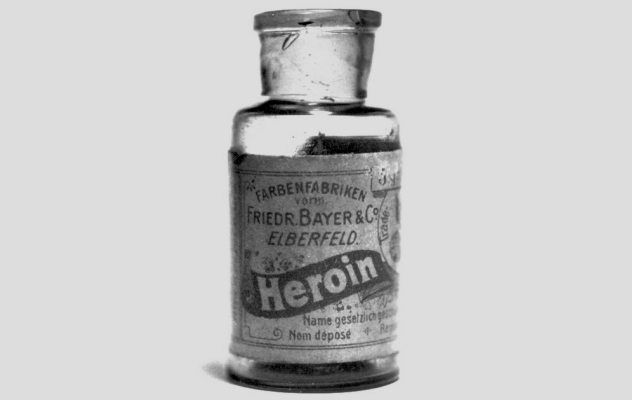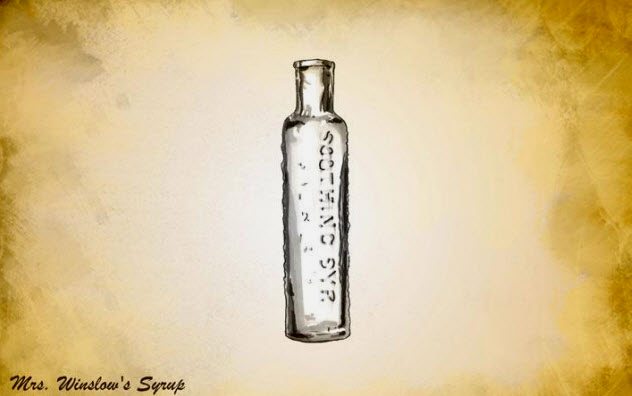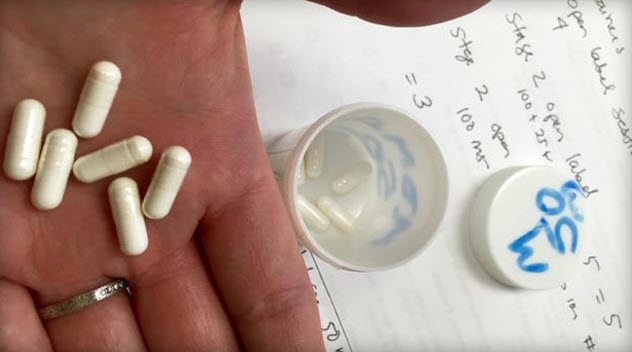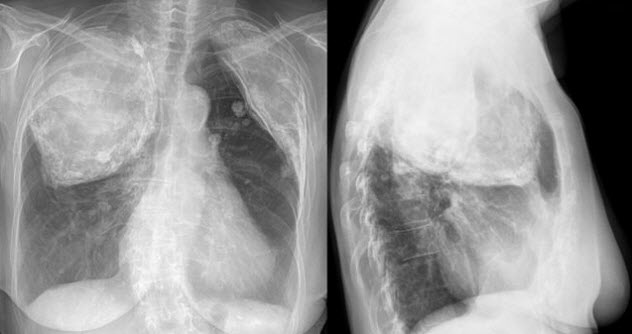 Weird Stuff
Weird Stuff  Weird Stuff
Weird Stuff  Our World
Our World 10 Ways Your Christmas Tree Is More Lit Than You Think
 Movies and TV
Movies and TV The 10 Coolest Stars to Set Sail on The Love Boat
 History
History 10 Things You Didn’t Know About the American National Anthem
 Technology
Technology Top 10 Everyday Tech Buzzwords That Hide a Darker Past
 Humans
Humans 10 Everyday Human Behaviors That Are Actually Survival Instincts
 Animals
Animals 10 Animals That Humiliated and Harmed Historical Leaders
 History
History 10 Most Influential Protests in Modern History
 Creepy
Creepy 10 More Representations of Death from Myth, Legend, and Folktale
 Technology
Technology 10 Scientific Breakthroughs of 2025 That’ll Change Everything
 Weird Stuff
Weird Stuff Ten Bizarre Facts About The Doge Meme
 Our World
Our World 10 Ways Your Christmas Tree Is More Lit Than You Think
 Movies and TV
Movies and TV The 10 Coolest Stars to Set Sail on The Love Boat
Who's Behind Listverse?

Jamie Frater
Head Editor
Jamie founded Listverse due to an insatiable desire to share fascinating, obscure, and bizarre facts. He has been a guest speaker on numerous national radio and television stations and is a five time published author.
More About Us History
History 10 Things You Didn’t Know About the American National Anthem
 Technology
Technology Top 10 Everyday Tech Buzzwords That Hide a Darker Past
 Humans
Humans 10 Everyday Human Behaviors That Are Actually Survival Instincts
 Animals
Animals 10 Animals That Humiliated and Harmed Historical Leaders
 History
History 10 Most Influential Protests in Modern History
 Creepy
Creepy 10 More Representations of Death from Myth, Legend, and Folktale
 Technology
Technology 10 Scientific Breakthroughs of 2025 That’ll Change Everything
10 Terrible Ideas In Medicine From The Past 100 Years
Medical science and technology are always changing. Advances in equipment and scientific knowledge allow medical procedures to become safer and less invasive so that we can all stay healthy and live longer.
However, you may be surprised by how much our medical knowledge has changed in just the last 100 years. Not that long ago, we all believed in and trusted these crazy procedures that we now know were terrible ideas. It begs the question: What current medical ideas will we look back on as insanity in the next 100 years?
10 Lobotomy

For mental illnesses such as schizophrenia and depression, some psychiatrists in the 1940s suggested putting two ice picks through your eye sockets and hammering them into your brain. By damaging the brain tissue, specifically the frontal lobes responsible for personality, lobotomy was supposed to stop the “bad behaviors” seen in schizophrenia, bipolar disorder, and other mental illnesses.
Surprisingly, Antonio Egas Moniz, who developed the lobotomy, won the Nobel Prize in Physiology or Medicine in 1949. This surgical procedure only helped about 10 percent of patients. Most individuals who had lobotomies became withdrawn, childlike people with dull personalities. They were no longer able to perform basic tasks and take care of themselves.[1]
Around 40,000–50,000 people were lobotomized in the US alone. The USSR banned this surgery in 1950 as an inhumane procedure, saying it “changed an insane person [into] an idiot.” Soon, other countries also banned it.
Lobotomy procedures were discontinued with the advancement of psychiatric medication for mental illnesses. Many people have also petitioned that Moniz’s Nobel Prize be revoked.
9 Radioactive Water

While we try to avoid radiation now, radioactivity was a new, exciting discovery about 100 years ago. We thought it was good for our health. People bought radium pendants, uranium blankets, and radon water with the hopes of improving their digestion, arthritis, and whatever else ailed them.
One popular product was the Radium Ore Revigator, which was a watercooler lined with a radioactive ore that upon decay would “enhance” your drinking water with a high concentration of radon.[2]
Eben Byers, a wealthy Pittsburgh steel industrialist and moderately famous golfer in the 1900s, began taking a radium water product called Radithor when his doctor suggested it for his health. By 1930, Byers had multiple cancers and holes in his skull. Most of his jaw had also fallen off.
Upon his death, people began to realize the dangers of radiation exposure. Soon, the EPA began taking steps to prevent exposure to radiation among the general population. Of course, we now know that radiation should be avoided.
8 Heroin For Your Cold

From around 1900 to the 1950s, heroin was a prescription drug used for coughs, colds, pain relief, and more. Heroin cold medicine was made by Bayer, a well-known pharmaceutical company, which even marketed the cough syrup for children.
Heroin also gained popularity as a prescription painkiller because testing showed that it was eight times more powerful than morphine. Due to its euphoric effect on the patient, heroin became an abused drug in the years following.[3]
The US government realized that heroin was one of the most dangerous and addictive narcotics in the world and probably shouldn’t have been so readily available. The drug’s recreational use and addictive properties resulted in the discontinuation of its common medical use. In 1924, the US banned heroin. Today, it is listed as a controlled substance, illegal to possess without a DEA license.
7 Soothing Syrup For Babies

A popular medicine in the late 1800s to early 1900s was “Mrs. Winslow’s Soothing Syrup,” a drug given to babies to stop teething pain, diarrhea, and other minor ailments.
The soothing syrup aimed to prevent crying children and had popular advertising that contained appealing domestic images of mothers and babies. Many mothers told others about how well it worked to stop their children from crying and to soothe the kids to sleep.
What was in this miracle drug, you ask?
The syrup was pure morphine dissolved in alcohol and was sold until the 1930s. Morphine, a strong opiate painkiller with serious side effects and a highly addictive nature, was a dangerous substance to be giving to babies in concentrated doses.[4]
Widely popular, the syrup unfortunately led to numerous infant deaths from overdose as well as many drug-addicted children. This resulted in its removal from the market.
6 Ecstasy

Throughout the 1970s, MDMA (aka “Ecstasy”) had a decent following of psychiatrists who suggested its use for psychological therapy in patients with depression, autism, PMS, and, ironically, substance abuse.
Psychotherapists who promoted MDMA often felt that the drug accelerated the patient’s therapy. If the patient had no inhibitions, his communication improved and he responded to his therapist’s ideas positively and openly.
With its euphoric effects, MDMA quickly became a heavily abused, recreational party drug. It was made illegal in the 1980s. Surprisingly, Ecstasy therapy may be returning for use with PTSD patients.
While MDMA is still illegal, the FDA has given it “breakthrough therapy” status as early trials showed positive results. The drug is currently going through FDA-approved clinical trials for potential use in returning veterans with PTSD.[5]
5 Smoking For Your Health

In the early 20th century, we actually thought smoking was good for us. Inhaling tobacco fumes was believed to help asthma. Tobacco advertisements from the 1920s to the 1950s often featured doctors smoking cigarettes and endorsing their health qualities.
Lucky Strike cigarettes advertised that their manufacturing process produced a cigarette that was “your throat protection against irritation and against cough.” Smoking cigarettes was also a dieting trend among women in the 1920s. Advertising such as “reach for a Lucky instead of a sweet” attracted women to nicotine’s appetite suppressant qualities.[6]
In 1953, three scientists named Wynder, Graham, and Croninger published their laboratory findings that confirmed cigarettes caused cancer. As a result, the tobacco industry began to suffer.
Doctors soon stopped smoking, and people realized that cigarettes were dangerous. Now, many tobacco-related ad campaigns try to get people to quit smoking and are open about how bad cigarettes are for our health.
4 Methamphetamine Diet Pills

If smoking cigarettes wasn’t enough to get you losing weight in the 1950s, you could have taken crystal meth diet pills. Amphetamine medications were taking over the country, including diet pills such as Obetrol, Dexamyl, and Eskatrol. Obetrol, which was marketed specifically for “exogenous obesity,” contained a mixture of several amphetamine salts, over half of which was methamphetamine hydrochloride (aka “crystal meth”).
Amphetamines were extremely popular. According to FDA manufacturer surveys, US production of amphetamines in 1962 reached the level of about 43 doses (of 10 milligrams each) per person per year based on the total population. Approximately 33 percent of the prescriptions were for weight loss, and women made up 85 percent of all amphetamine patients.[7]
This widespread popularity also revealed the health problems and addictive properties associated with excessive consumption of meth. Not surprisingly, it became an abused drug.
In the 1970s, the government started restricting amphetamines and listed them as controlled substances. The popular diet pill Obetrol, which was abused as a recreational drug in the 1960s, was reformulated to remove meth, although other amphetamine salts were still present. Obetrol is no longer made today.
3 Plombage

From the 1930s to the 1950s, tuberculosis was one of the leading causes of death. Antibiotics of any kind were rare at the time, and no medications were available for the treatment of tuberculosis. However, there was a medical procedure called “plombage.”
The plombage surgery consisted of filling the patient’s pleural cavity (the lung area behind the rib cage) with random materials such as mineral oil, Lucite balls, gauze, paraffin wax, rubber, or animal fat. There is even a published study of plombage surgeries performed on children in which sterilized Ping-Pong balls were used as fillers.
The procedure would cause the lung to collapse and no longer function. According to the theory, if the diseased lung was made to collapse, it would heal itself over time. The surgery would often allow the patient to live longer and experience short-term improvement.
However, many complications were seen decades later, often from infection, hemorrhage, or movement of the foreign material filler. Thankfully, after the availability of modern antibiotics for tuberculosis in the 1950s, plombage surgery was abandoned.[8]
2 Ear Candles

This alternative method for cleaning out earwax was often advocated because it was cheap and people could try it themselves at home. The idea was to place the unlit end of a hollow candle in your ear and then burn the other end to create negative pressure and draw wax out of the ear.
Not surprisingly, a study proved that this practice was not effective and could actually deposit hot candle wax in your ear. Many people who tried this had to see a doctor for injuries resulting from candle use.
The most shocking part? This study was published in a professional medical research journal in 1996! That is surprisingly recent for people to be using their ears as candleholders.[9]
1 Shark Cartilage Supplements

The theme behind this health fad: “Sharks don’t get cancer, so let’s all take shark cartilage.” Research on shark cartilage in the 1970s and 1980s sparked the popularity of taking this substance for cancer. These studies showed that sharks rarely get cancer because their cartilage contains a substance that inhibits tumor growth.
Understandably, everyone wanted this to be the cure for cancer and the market became flooded with shark cartilage supplements. There were over 40 brands in various dosage formats, including pills, liquids, topical creams, and even enemas.
However, over a dozen clinical trials of shark cartilage were conducted with cancer patients and no health benefits were observed. The National Cancer Institute says that shark cartilage has no effect on cancer, and supplements are not approved for use by the FDA.[10]
I work as a chemist and a professional pianist. I have a bachelor’s degree in environmental science and a bachelor’s in music. I live on a small goat farm and am an environmental enthusiast.
Read more astonishing facts about medicine on 10 Secrets Of Ancient Medicine and 10 Astonishing Facts That Forever Changed Medicine.








